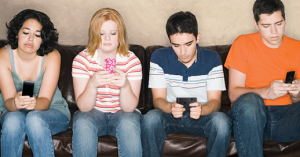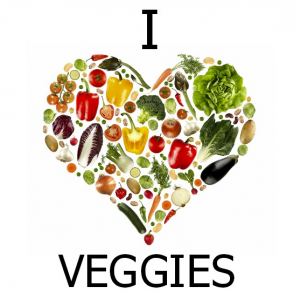Advocacy Through Art: A Cross-Curricular Project
Like many others, our school is adopting a project-based learning (PBL) approach to education. PBL challenges students to find real-world solutions to their questions through inquiry, collaboration, and reflection. Sometimes it works, and sometimes it doesn’t. But that’s all part of the process.
Our school’s health and art departments recently teamed up to assign an authentic project that could lead our students to deeper learning: We tasked the art students with creating logos for health students’ advocacy campaigns.
Here’s a project run-down:
Phase 1: The Preparation
For health students (the advocates):
• Research advocacy groups that stand for a cause you feel strongly about. During this part of the project, we taught the kids about the connections between being an effective advocate and setting SMART goals.
• Write down three possible topics or issues you would like to advocate for. Rather than letting them pick their own partners, students were matched up by passion. Working for a cause they cared about and with someone they didn’t normally interact with added an element of real-life learning and ensured that students stayed focused and motivated.
• Research your topic and create a one-minute PSA to inspire the artists to work for your campaign. We prepped students for this by showing them examples of PSA’s, both student-produced and professionally done.
For art students (the designers):
• Create a design portfolio to inspire the advocates to choose your art. These were beautifully done and included prints, typography, and color schemes that the students felt represented them as an artist.
Phase 2: The Pitch
We gave the kids rubrics to take notes on each other as we rotated them through “speed-dating style.” In intervals of three minutes, they engaged in some Q&A about each other’s causes and design portfolios.
Then, the artists ranked their top three choices based on the causes that inspired them the most, while the advocates ranked the artists by which aesthetic they felt would best support their cause.
Phase 3: The Product
Once the advocate/designer pairs were announced, students met to discuss their ideas for implementation using the design thinking process. The pairs then met a week later to gauge progress and gather feedback to be sure that they’re on the right track.
Another week later came the final reveal, during which the artists showed their logo options to the advocates, and the advocates selected the one they felt best represented their cause.
The artists printed laptop stickers of their logos, as well as provided the advocates with JPEG files to use in their social media campaigns. The instant gratification of having the stickers in hand was exciting for the artists and the advocates (and for us teachers, too—there were some great stickers produced!).
The Verdict: Success!
Though this project required a lot preliminary work (like much PBL does), it was absolutely worth it. Collaborating with the art faculty gave our health department so many new teaching ideas, and it was exciting for the kids from both classes to experience a real collaboration process while digging into an advocacy campaign they felt passionately about.
From anti-smoking, to pollution reduction, body image, balanced tech use, and even middle school naps, the kids created impressive campaigns that they might follow through with and implement in the future.
Here’s hoping that nap idea takes off!
For more ideas on collaborative PBL with a focus on health, check out these 4 Ways to Implement Cross-Curricular Learning.





